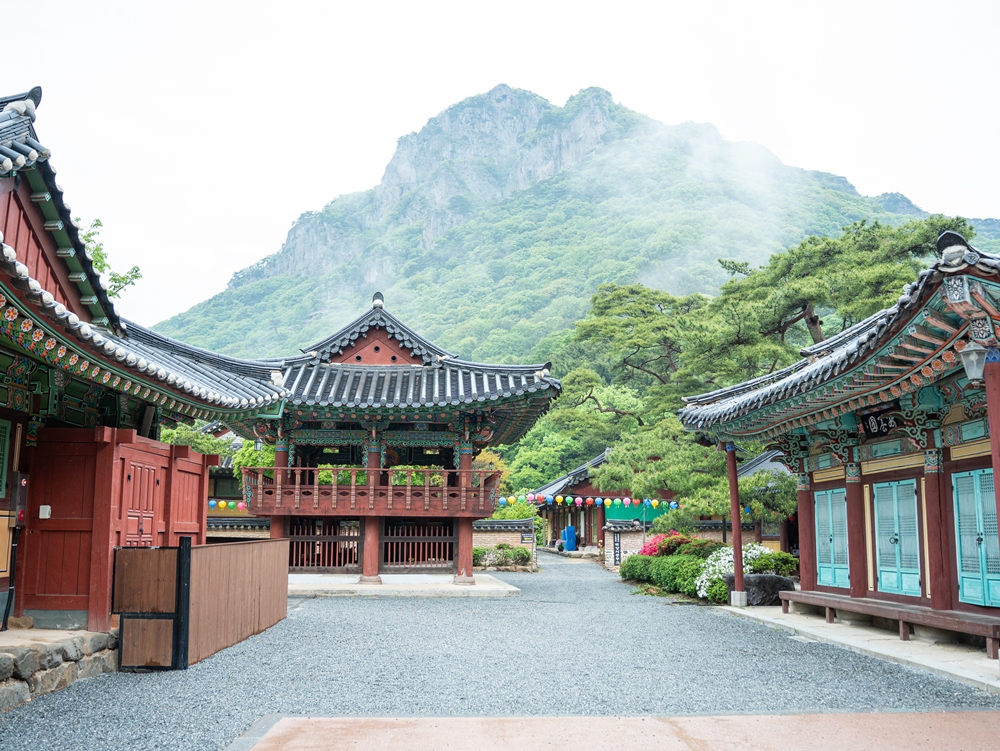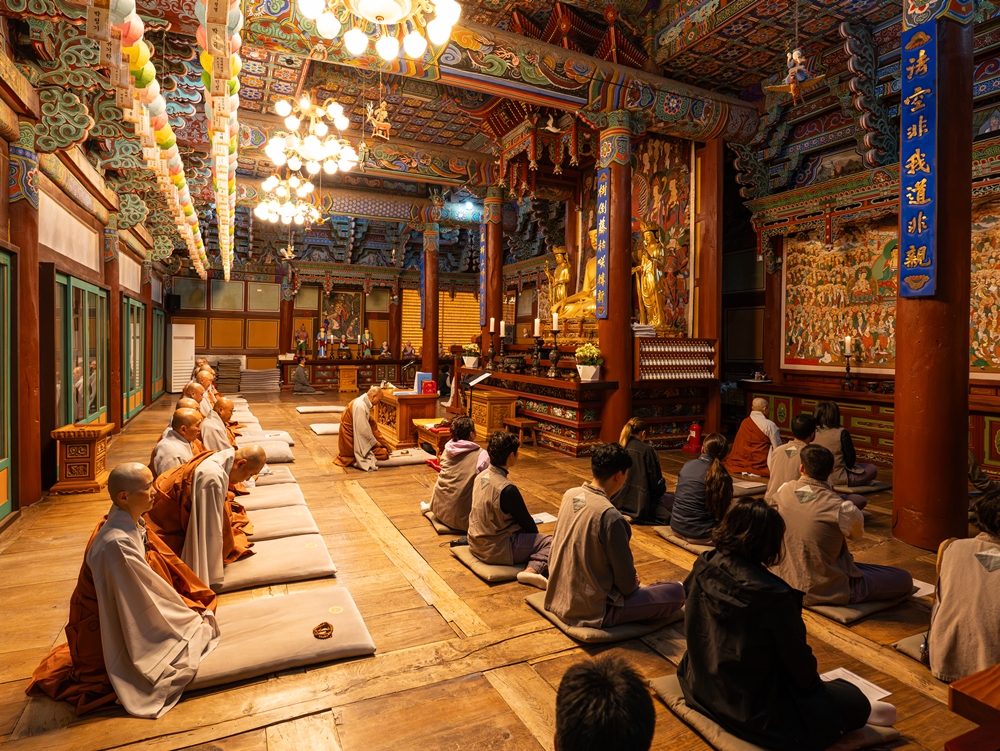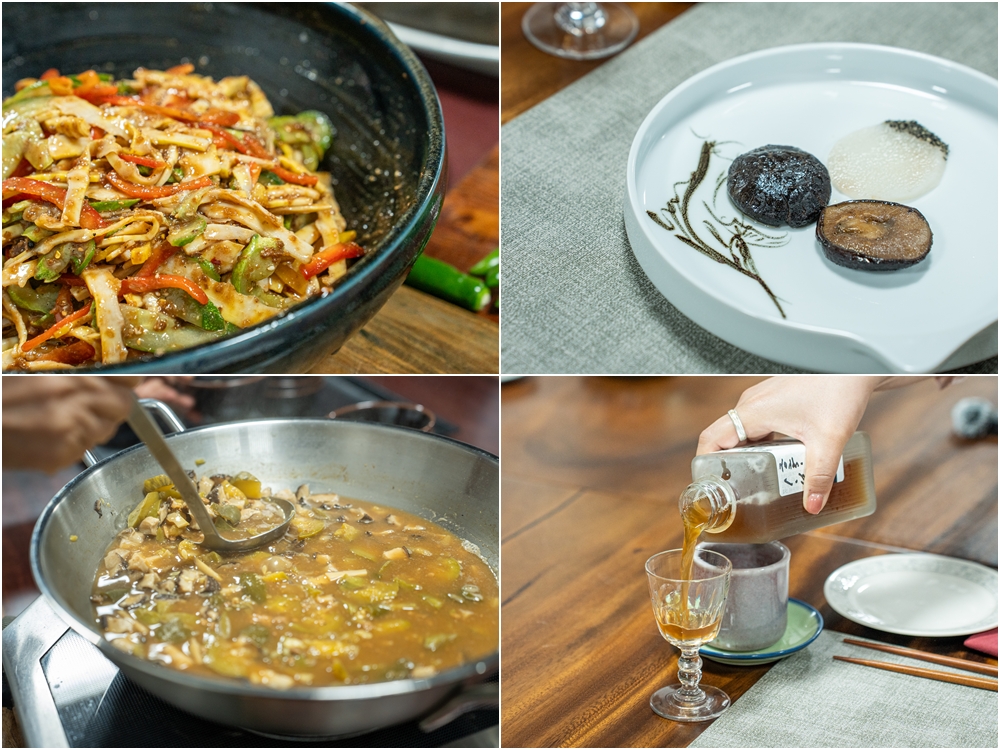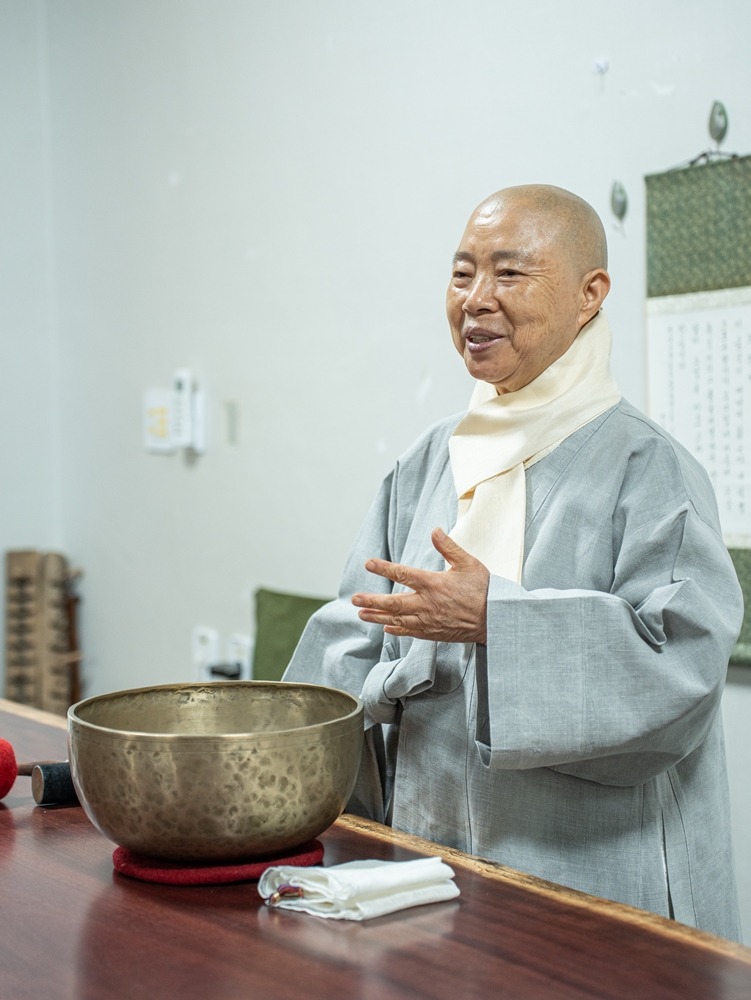By Charles Audouin
Photos = Ministry of Culture, Sports and Tourism
At dawn on May 3 at Baekyangsa Temple in Jangseong-gun County, Jeollanam-do Province, umbrellas neatly placed next to the wall of Daewoongjeon Hall began to be unfolded.
Fifteen foreign reporters were at the temple that day amid a drizzle that began before the early morning service.
The group had traveled 300 km from Seoul the night before. Colorful lanterns were hanging throughout the yard and along the eaves of the main hall to commemorate Buddha's 2,569th birthday.
Templestay: mind-clearing experience
Visitors can stay overnight at a temple through the program, a joint project launched in 2002 by the government and the Jogye Order of Korean Buddhism ahead of the FIFA World Cup the same year cohosted with Japan. The purpose was to overcome an accommodation shortage and promote traditional Korean culture to the world.
The program has proven immensely popular. Six million people took part in it through the next 20 years, 11% of them foreign nationals.

Located on Naejangsan Mountain, which is renowned for its red leaves in fall, Baekyangsa Temple was established in the seventh century under the Baekje Kingdom (18 B.C.-A.D. 660), when Buddhism spread throughout the Korean Peninsula.
Baekyangsa is a good choice for an overnight stay. The refreshing sound of the stream is clearly audible upon entering and a gargantuan rock wall surrounds the compound like a folding screen, and urban noise is not heard.
Traditional Korean geomantics say a mountain system is connected just like that of a river. Based on this premise, Baekyangsa is located in the southernmost part of the Baekdudaegan mountain range and connects Baekdusan Mountain in the north and Jirisan Mountain in the south, creating a sense of peninsular unity.
This was explained by the chief monk Ven. Mugong, who said, "Baekyangsa Temple is the final gathering place of all energy throughout the country. Thanks to this energy, Jangseong-gun County since ancient times has also produced many outstanding figures and scholars."

Foreign reporters and monks at Baekyangsa Temple on May 3 hold a morning prayer service at Daewoongjeon Hall, the main hall of the temple decorated with dancheong, or traditional architectural designs on the wooden buildings of temples, palaces and shrines.
Early morning service and meditation: monk's routine at dawn
A monk's day begins with an early morning service. They sit in front of a golden Buddha statue at 4:20 a.m. and the ritual is run to the sound of a moktak, a hollow, wooden percussion instrument used in Buddhist rituals. After doing Buddhist prostrations, the monks again kneel and place their foreheads on the floor, putting their hands next to their heads on the floor as if doing gymnastics.
The reporters followed each movement.
After the rituals come Seon (Buddhist) meditation. Amid deep silence and emptying their minds, the monks and the reporters looked as if they were in another place with calm expressions.
The morning meal ritual was at 6 a.m. with no milk, bread or cereal on the table. Rice, seaweed soup and side dishes of seasoned vegetables were neatly served instead.
One ironclad rule is to finish one's plate. Each person must wash his or her plates with clean water after eating everything served. The act of eating is part of Buddhist practice.

Clockwise from left are seasoned cucumber and bamboo; pyogo (shiitake) mushroom and yam; kombucha; and doenjang jjigae (soybean paste stew).
Buddhist table etiquette explained by celebrity monk
At 10 a.m., the reporters met Ven. Jeonggwan, who is famous for showing temple food on the 2017 Netflix documentary "Chef's Table." Chefs from around the world have since visited Baekyangsa to learn the value and secrets behind his culinary creations.
A cooking class at Cheonjinam Hall featured representative fermented foods such as kimchi, soy sauce, doenjang (soybean paste), gochujang (chili paste), vinegar, bamboo shoots, cucumbers, mushrooms, sancho (prickly ash) and black raspberries. All of these ingredients from the temple were not spicy and had no pesticides, with no strong smelling garlic, onions or scallions.
The monk said while cutting a sweet pumpkin with a spoon, "You have to first know the ingredients if you want to cook. First think about where and how they came from, the amount to prepare and whether to steam or boil it and then decide what type of food to make."

Ven. Jeonggwan speaks before reciting Ogwangwe, or a chant recited by monastics before eating at a temple.
After a while, everyone sat at the table for lunch. Each bite was deep and transparent, and each vegetable and herb had a unique flavor discernible even with one's eyes closed. The chili's spicy taste and the broth's mild taste created a doenjang jjigae more delicious than previously experienced.
Before leaving the temple, the reporters drank green tea with the monks.
"If you don't eat well, you can't live a long and healthy life and will get sick. It's like life and companionship. You can live without a spouse or children but not without food."
Driving to Baekyangsa Temple is the best way to get there. After exiting the Honam Expressway at Naejangsan or Baekyangsa interchange, drive along National Route 1 toward Jangseongho Lake for 15-20 minutes. By train, get off Baekyangsa Station on the Honam Line of the Mugunghwa-ho Train or Jangseong Station of the high-speed rail KTX. Then take a bus at Jangseong Public Bus Terminal but a taxi ride (fare KRW 20,000-KRW 30,000) is advised.
Discover more of Korea's rich Buddhist heritage on Templestay's official website (templestay.com).
caudouin@korea.kr